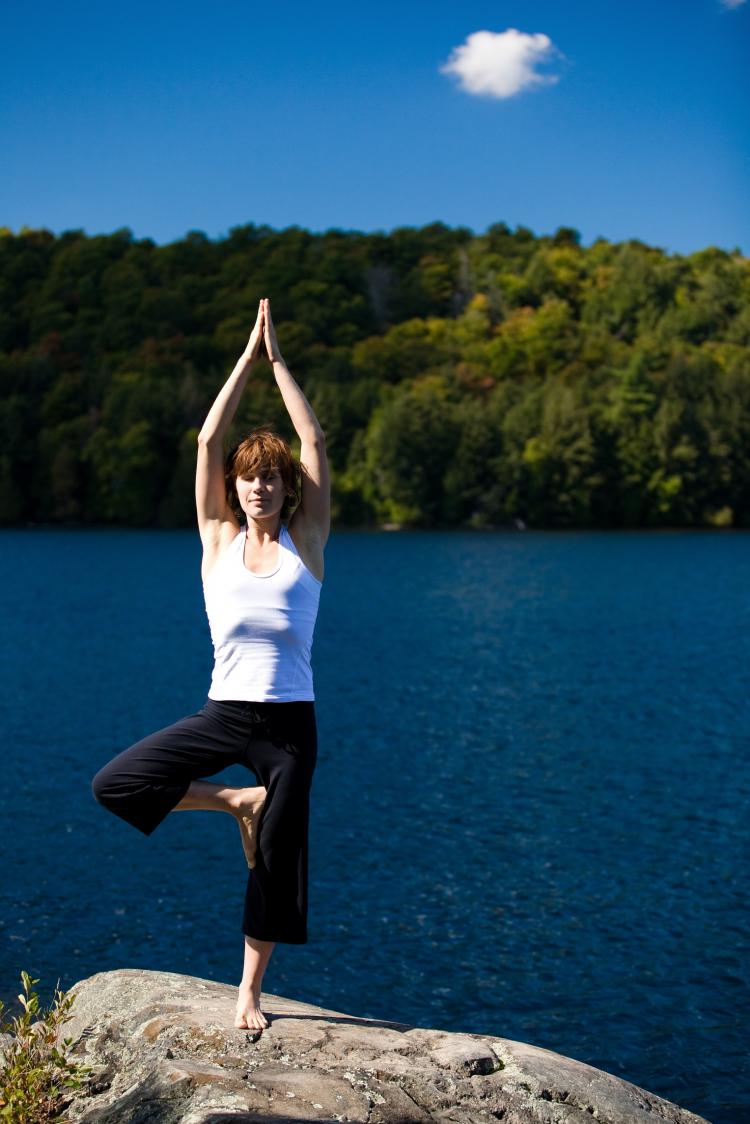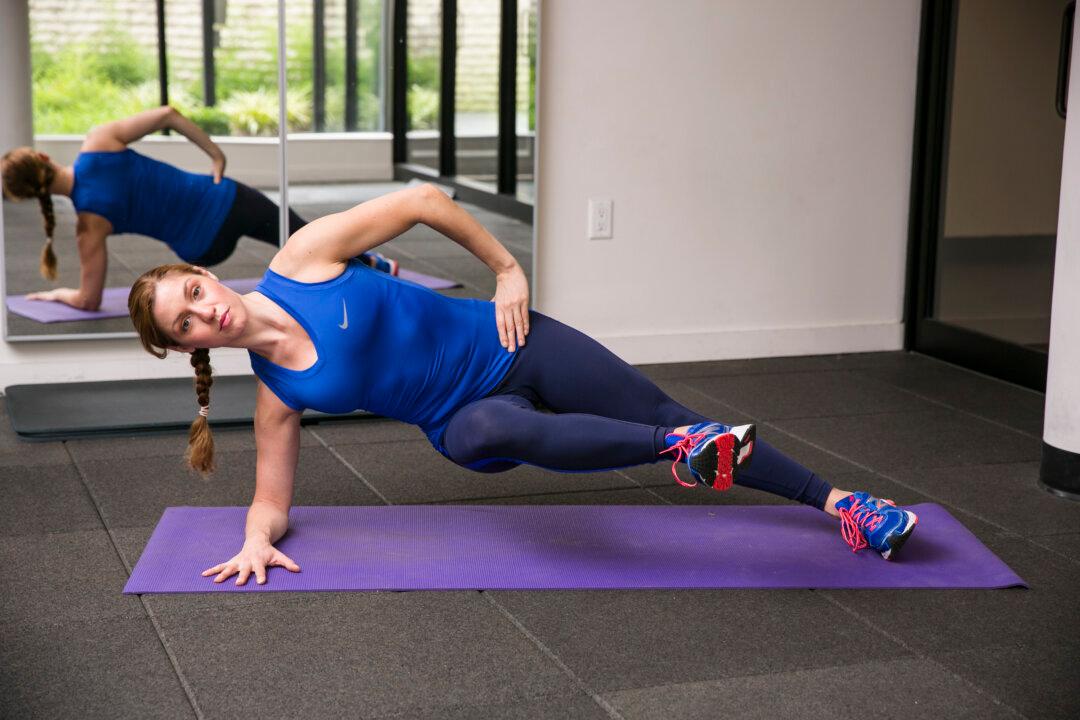Tree pose, otherwise known as Vrksasana (vrik-SHAHS-anna) is a great posture to help with balance while stimulating both the mind and the body.
A tree has strong roots, yet is pliable enough at its branches to withstand strong winds. Being able to bend and flow well, the tree will not crack or fall under the force of the wind. Like a tree, this posture requires strong roots (feet and ankles) while keeping the upper body long and fairly relaxed, not tense.
Before going into the tree pose, stand tall on both feet and focus inward. Imagine the bottoms of your feet rooting down toward the center of the earth. Be mindful of your foot placement. You want all four corners of your feet evenly pressing into the earth.
Find a focal point in front of you and focus on your postural alignment. Be sure to align your ears over your shoulders, your shoulders over your hips, and your hips over your ankles.
Draw your inner thighs toward each other to activate them. If you have trouble finding them, you may do this exercise with a yoga block between your legs.
Keeping your focal point, shift your weight to your right foot. Visualize light shoot down your inner thigh and hamstring and out the bottom of your right foot. You want to feel your inner thigh (which is part of your midline) activate as it did when you were holding the block or pulling your legs together. Be sure to keep your lower abdomen gently drawn inward and the crown of your head pulled upward.
Shift your weight back to both feet and take a moment to notice the difference between your legs. Repeat the balance on the left leg, and then back to center.
Now that you have warmed up your feet, ankles, and legs, you are ready for the pose.
Shift your weight to your right foot and reach down with your left hand. Take hold of your left ankle. Bring your left foot to your right inner thigh, as close to the groin as you can. Press your left foot into your right thigh, and your right thigh into your left foot. Bring your hands into a prayer position in front of your heart, keeping your focal point. Find your balance.
People often let their feet roll inward or outward. Be sure to keep your foot evenly weighted between all four of it’s corners.
Once you have found your center and balance in the pose, slowly raise your arms above your head. You may keep your arms parallel and reach your fingertips to the sky, or you may interlace your last four fingers together, while keeping your thumb and first finger pointing upward.
Slowly return to the starting position when you are ready and repeat on the other side.
A Few Pointers
For people with tighter inner thighs they may find that when going into this pose their back arches (butt sticks out) to compensate for the tightness. Rather than forcing the foot up the leg, practice this pose with the foot placed lower down.
By keeping your abdominal muscles knitted together, your balance will become more stable. If you forget to use them, you may feel your ankle overworking. Prior to going into the tree pose, it may help to practice some abdominal toning exercises to help warm up those muscles.
Balance has a lot to do with one’s ability to focus. If you try to balance, yet your mind is wandering all over the place, you may find your body wandering as well. Keeping your eyes on a still focal point and your awareness on your alignment will tremendously help your balance.
To make this balance pose more challenging you may try it with your eyes closed.
To make this balance pose less challenging, you may try it by a wall. Stand one foot from the wall and place the foot closest to the wall against your inner thigh. Keep the knee of that foot against the wall to help you stabilize.







